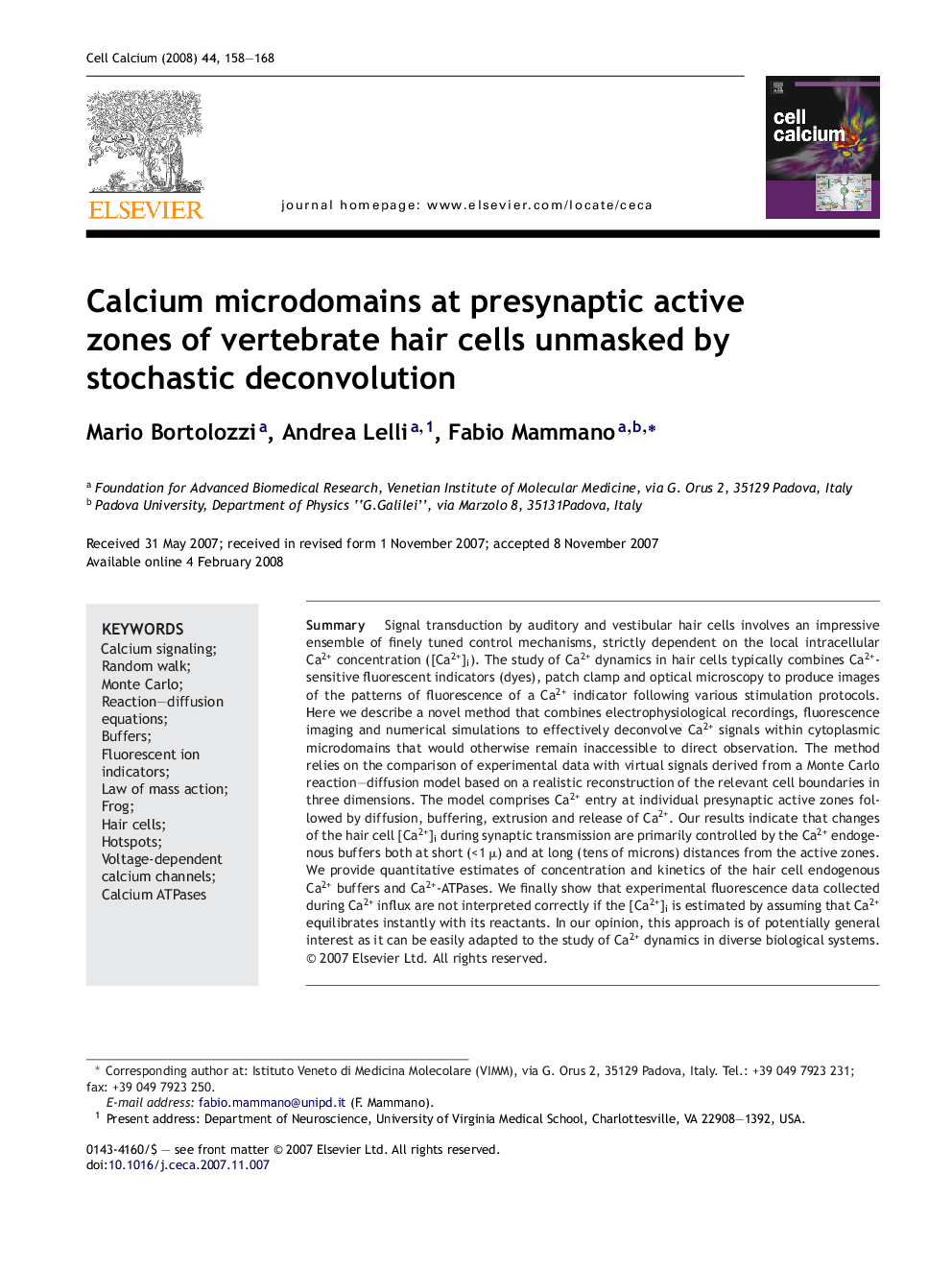| Article ID | Journal | Published Year | Pages | File Type |
|---|---|---|---|---|
| 2166502 | Cell Calcium | 2008 | 11 Pages |
SummarySignal transduction by auditory and vestibular hair cells involves an impressive ensemble of finely tuned control mechanisms, strictly dependent on the local intracellular Ca2+ concentration ([Ca2+]i). The study of Ca2+ dynamics in hair cells typically combines Ca2+-sensitive fluorescent indicators (dyes), patch clamp and optical microscopy to produce images of the patterns of fluorescence of a Ca2+ indicator following various stimulation protocols. Here we describe a novel method that combines electrophysiological recordings, fluorescence imaging and numerical simulations to effectively deconvolve Ca2+ signals within cytoplasmic microdomains that would otherwise remain inaccessible to direct observation. The method relies on the comparison of experimental data with virtual signals derived from a Monte Carlo reaction–diffusion model based on a realistic reconstruction of the relevant cell boundaries in three dimensions. The model comprises Ca2+ entry at individual presynaptic active zones followed by diffusion, buffering, extrusion and release of Ca2+. Our results indicate that changes of the hair cell [Ca2+]i during synaptic transmission are primarily controlled by the Ca2+ endogenous buffers both at short (<1 μ) and at long (tens of microns) distances from the active zones. We provide quantitative estimates of concentration and kinetics of the hair cell endogenous Ca2+ buffers and Ca2+-ATPases. We finally show that experimental fluorescence data collected during Ca2+ influx are not interpreted correctly if the [Ca2+]i is estimated by assuming that Ca2+ equilibrates instantly with its reactants. In our opinion, this approach is of potentially general interest as it can be easily adapted to the study of Ca2+ dynamics in diverse biological systems.
